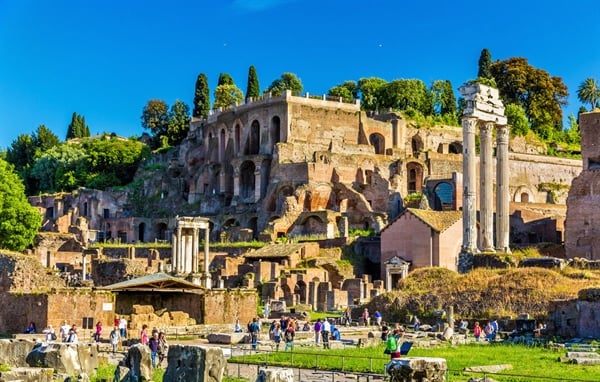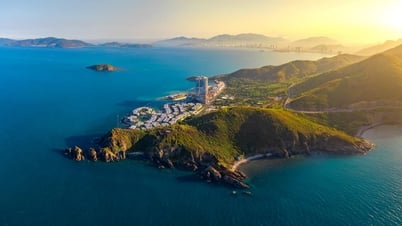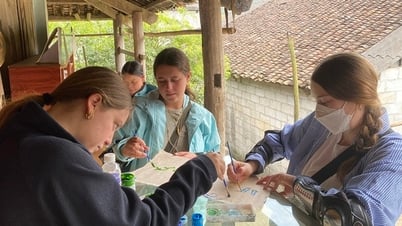
Domus Tiberiana Palace sits atop Palatine Hill Photo: COLOSSEUM ROME
The Domus Tiberiana was Rome's first imperial palace, built by the first-century AD emperor Tiberius, who combined and consolidated the existing aristocratic residences built on the hill. Covering more than 4 hectares, the palace contained living quarters along a large garden, a place of worship, and rooms for the emperor's Praetorian Guard.
As the centre of power and politics in Rome, the Domus Tiberiana palace held a privileged position above the Palatine Square and the Roman Forum, offering its occupants a “balcony view of the city”. Over time, the Domus was embellished and expanded by other emperors, including Nero, who was crowned at the age of 16 in 54 AD. The imperial palace remained in use until the 7th century, when it was the residence of Pope John VII. In the mid-16th century, the Farnese noble family – powerful local landowners – built the lavish Orti Farnesiani gardens on the grounds, decorating them with ornaments and sculptures of nymphs, satyrs and fauns. However, over the years the site fell into disrepair and in the 1970s the Domus Tiberiana palace was closed due to structural instability. Now, after six years of renovation, the palace has reopened. Frescoes are scattered throughout the site, giving visitors an insight into the palace's ancient grandeur.
Alfonsina Russo, director of the Colosseum Archaeological Park and lead archaeologist on the renovation, said that many of the exceptionally well-preserved artifacts unearthed during the project were from the frescoes. The artifacts – brightly colored frescoes, amphorae, pottery, looms, terracotta and statues of gods related to the cults of Isis, Dionysius and Mithras – take visitors on a journey through time. “Among the frescoes on display are some depictions of lemons, which were considered an exotic fruit in ancient Rome, and a picture of a gladiator, proving that gladiator games of that era were highly valued by the wealthy,” Russo explained.
A great deal of effort has been put into combining the old and the new. A series of reddish-brown domes have been carefully reconstructed using the same materials as the ancient Romans. This has brought the place – once home to the families of the nobles, then the Roman emperors – back to life. There are seven exhibition rooms with special finds, starting with rooms dating back to the original construction of the palace when the nobles lived in villas before Emperor Tiberius moved into the Domus palace.
“The palace is reminiscent of history. We have restored the Domus Tiberiana to its former glory, but there is still much work to be done,” said Russo. What makes the renovated Domus unique is its architectural style, he added. “We have tried to use original materials for reinforcement, in particular by hand reinforcing the 15-meter-high front arch that runs along the ancient stone pavement of the palace. This has certainly attracted public attention.” Since its reopening in late September, the Domus Tiberiana has attracted around 400,000 visitors, a “huge success,” according to Russo, adding that the reopening of the Domus Tiberiana will provide visitors with the most “evocative” visit in generations.
Archaeologist and ancient Roman scholar Giorgio Franchetti said that by reopening the Domus Tiberiana, Rome has “rediscovered a forgotten gem.” “The Palatine Hill has always been the stage for power politics in Rome. Emperor Tiberius chose this location to build his palace because it was his family’s residence. There are not many places like the Domus Tiberiana, where you can find the breath of history from the past,” said Giorgio Franchetti.
Thai An
Source



































































































Comment (0)